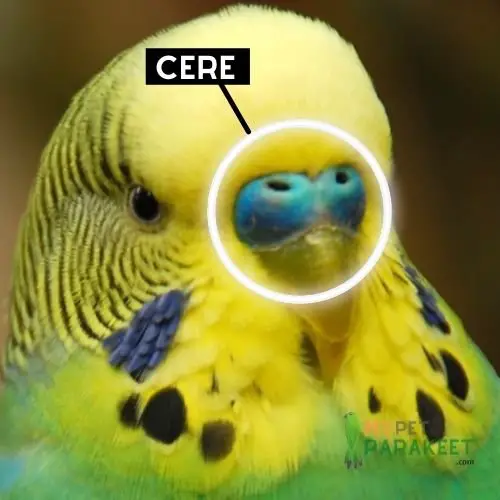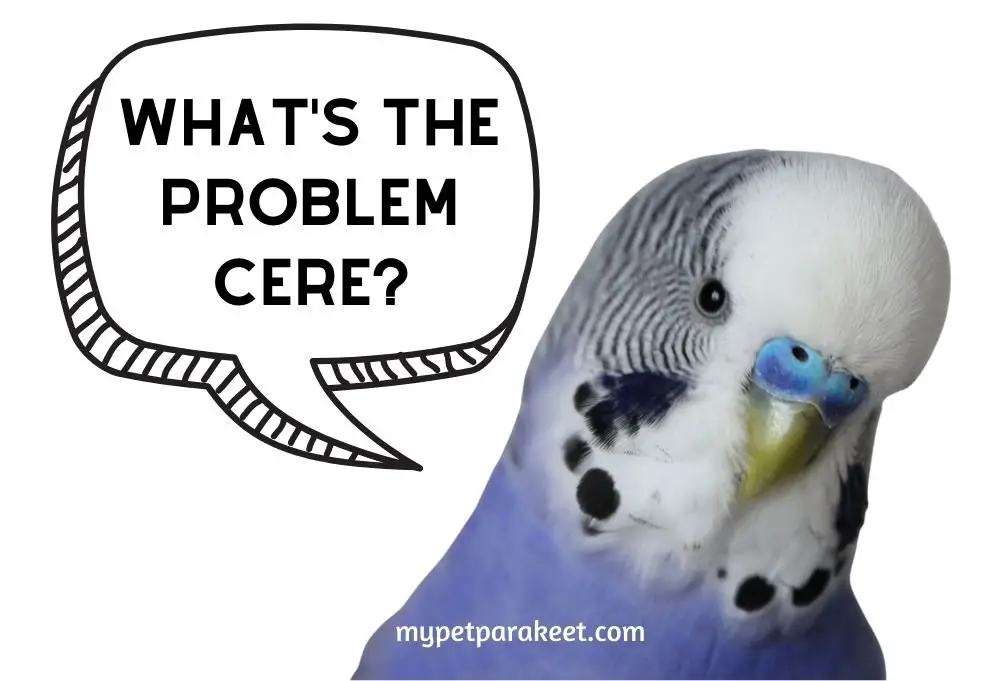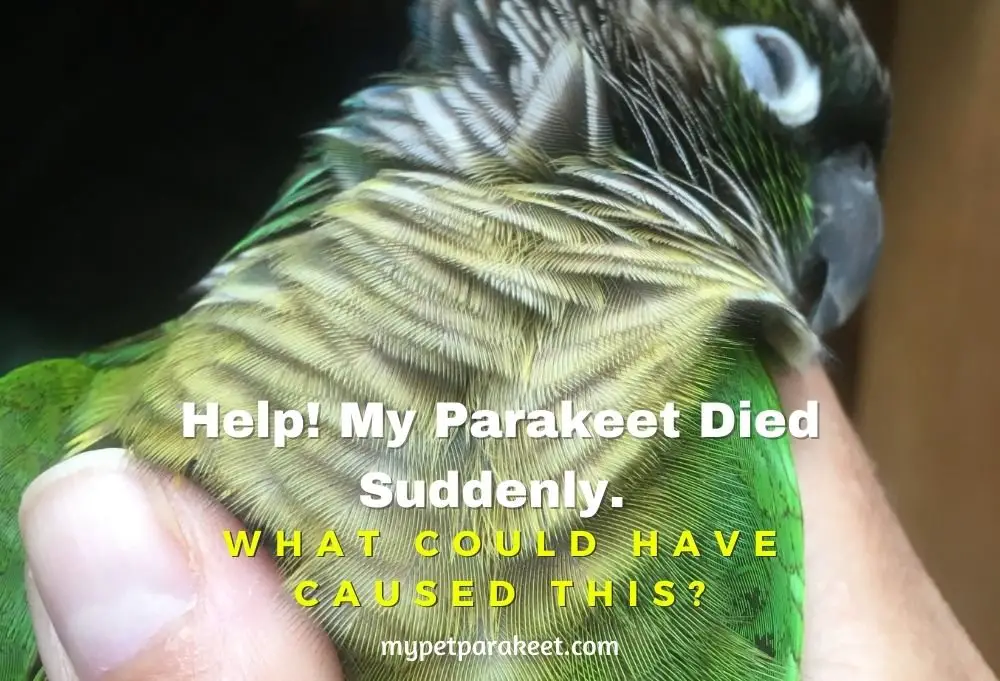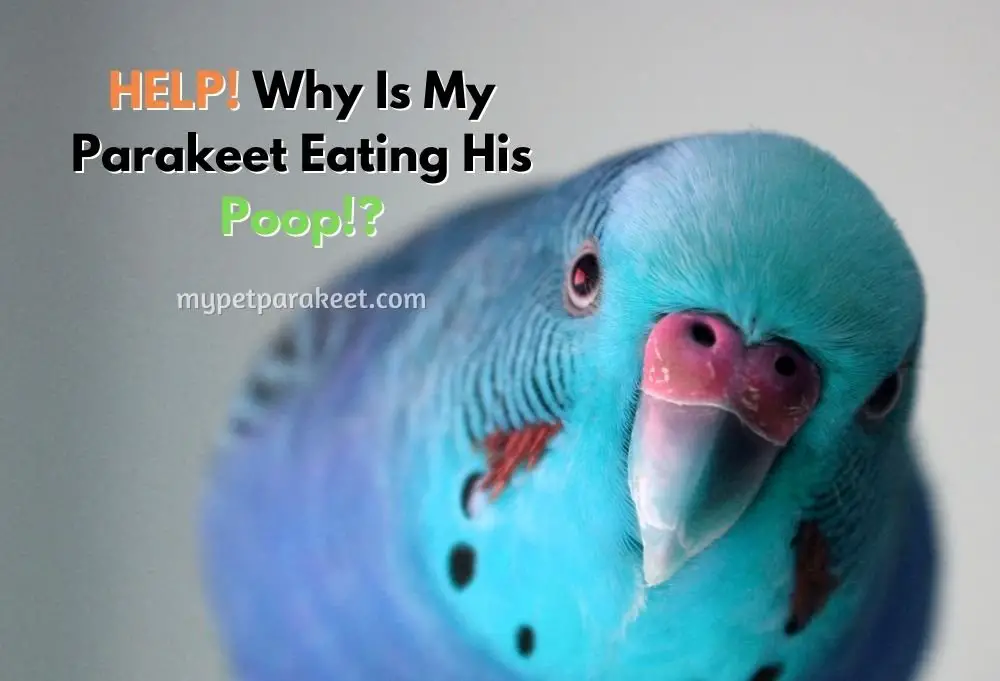In this post, we cover the change in color for the cere in parakeets as well as common problems that your parakeet may experience.
What Is A Cere?
A cere is a sheath that covers the base of your parakeet's beak and protects it from injury.

What Is The Cere Made Of?
The cere is made of keratin, a protein found in the beaks and claws of animals. It also contains blood vessels that help to keep it moist.
Parakeets have a cere that is different from other birds and it can change color when the area becomes dry or irritated.
Why Does The Cere Form In Parakeets?
Parakeets form ceres because they need the moisture to help them stay hydrated and cool.
Water droplets on their feathers also provide some natural cooling, but a parakeet's cere can act as an additional water reservoir that will keep it from dehydrating quickly.
As a result of it being an important organ in the parakeet's mouth, if something goes wrong with their cere, they may not be able to eat properly.
It is for this reason that we emphasize monitoring your pet closely so you can detect any changes early on and receive prompt veterinary care when needed.
Ceres can become irritated or dry for a number of reasons, including:
-Inadequate water intake resulting in dehydration
-A diet too high in carbohydrates that causes the bird to produce acidic saliva, which can irritate the cere and make it red.
-Foreign objects that have been ingested
-Infection from a virus or bacteria.
The most common condition involving the cere is an infection and will generally be red, swollen, or ulcerated with pus coming out of it.
How Can You Tell If Your Parakeet's Cere Is Inflamed Or Irritated?
As mentioned above, signs of an irritated cere are redness and swelling. The infection may also have a foul odor to go along with this appearance.
If you notice these symptoms in your pet, please contact a veterinarian ASAP as they may have an infection that needs to be treated.
My Parakeets Cere Has Changed Color; why?
Parakeet ceres change color for different reasons, one of which is dehydration. If your pet's cere has changed colors and you have noticed it drinking less water recently, then this may be the cause.
Another reason for the change in cere color is age.
What Age Does A Parakeet's Cere Change Color?
When a parakeet reaches around one year of age, the cere changes color. This is normal and expected in both males and females; however, if this occurs with an adult parakeet, it is usually a sign of illness or disease.
In females, the change is usually from pink to tan or white, light blue or brown.
In most males, the cere turns bright blue. However, there are some color varieties where it changes to a vivid purple or pinkish white instead.
Other Parakeet Cere Problems
Parakeet cere problems are not new to vets, but they are a huge concern to parakeet owners. Here are some other common cere problems you might encounter and what they mean.
Bleeding Cere
If you have noticed blood coming out of your bird's cere, it is important to take the vet as soon as possible. The blood may be a sign that something in their mouth has punctured or cut their tongue, and this needs immediate attention.
Similarly, a foreign body such as a seed or nut may have lodged in their throat, so when they try to swallow, it goes into the mouth. If this happens, you will need to get your vet's advice on how best to remove it without damaging any important structures.
Dry Cere
If your parakeet has a dry cere and you are not sure why it may be a sign that the bird is not drinking enough water. The dry cere can also happen when they have an illness or disease, so it's important to monitor them closely for changes in behavior and appearance.
Fluid Coming From Cere
If you see fluid leaking from your parakeet's cere, it is vital to take them to the vet. There may be an infection or a foreign body in their mouth that needs attention, and your bird will not be able to eat properly until they are treated.
Peeling Cere
If you have noticed the feathers around the cere coming out and the cere peeling off, revealing the skin underneath, this may not be a sign of anything concerning and could just be your parakeet's lack of preening or incomplete preening. Just watch her over the next few days/week to see if you notice any changes in behavior, eating and drinking habits, and overall health.
Cere Overgrowth Or Growth Coming From Cere
Sometimes, the cere might start to grow away from the beak, curl up slightly, appear raised, or change shape. This is known as “hypertrophy.'
Birds suffering from cere hypertrophy are analogous to sufferers of catarrh, and the disease is common in chronic illnesses. The cause for this has been determined as not being caused by a local infection on your bird's body, but rather an underlying ailment that must be treated first before returning back to treating their condition. This could also include mites or tumors causing it.
It is important that you do not try to treat this condition by your own accord as it can restrict their ability to eat, drink or breathe. Similarly, do not try to pick it off yourself as you could worsen the condition.
Please see an avian vet immediately if you suspect your parakeet is suffering from this condition.
Conclusion
Most cere problems can be solved with a spray given to you by an avian vet and are not life-threatening if acted upon quickly. Be sure to take your parakeet to the vets at least once a year for a general check-up and groom – this will help your vet identify any warning signs of illness for a pre-emptive strike.
As a general rule, it's best to take your parakeet out of the cage and examine them regularly – this will help you catch any health problems before they become too serious.










